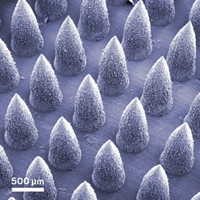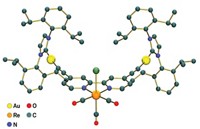Advertisement
Grab your lab coat. Let's get started
Welcome!
Welcome!
Create an account below to get 6 C&EN articles per month, receive newsletters and more - all free.
It seems this is your first time logging in online. Please enter the following information to continue.
As an ACS member you automatically get access to this site. All we need is few more details to create your reading experience.
Not you? Sign in with a different account.
Not you? Sign in with a different account.
ERROR 1
ERROR 1
ERROR 2
ERROR 2
ERROR 2
ERROR 2
ERROR 2
Password and Confirm password must match.
If you have an ACS member number, please enter it here so we can link this account to your membership. (optional)
ERROR 2
ACS values your privacy. By submitting your information, you are gaining access to C&EN and subscribing to our weekly newsletter. We use the information you provide to make your reading experience better, and we will never sell your data to third party members.
Pharmaceuticals
Researchers Tightly Control Gold Nanoparticle Size
Drug Delivery: Spheres could carry cancer drugs and reduce chemotherapy’s side effects
by Aaron A. Rowe
March 16, 2012

Gold nanoparticles could improve the effectiveness of cancer drugs, many researchers think, by selectively carrying the drugs to tumors. But many synthesis methods yield particles with a broad range of sizes, which probably would not pass muster with regulators. Now researchers have developed a method for making cisplatin-loaded gold spheres with tightly controlled size distribution (Inorg. Chem., DOI: 10.1021/ic202197g).
Side effects often limit patients’ doses of chemotherapy drugs. Researchers have shown in the lab that affixing a drug like cisplatin to nanoparticles allows them to target tumors selectively.
The nanoparticles help the drugs target tumors selectively, because, explains Nial Wheate of the University of Sydney, in Australia, who led the study, “Cancer cells are a bit like dodgy house builders.” They grow so quickly that gaps riddle their vasculature and lymphatic system, he says. Those holes allow nanoparticles of appropriate size to slip in. Inside a cancer cell, Wheate’s group has shown, the acidic intracellular environment releases the particles’ platinum-based drugs (J. Am. Chem. Soc., DOI: 10.1021/ja908117a).
Wheate and his team refined a previously developed procedure for making gold nanoparticles with strict size control; they made particles with diameters of 25, 55, and 90 nm. Using dynamic light scattering and atomic force microscopy, the researchers found that the diameter varied by less than 9% in each batch. To achieve those results, the team made adjustments to the previous synthesis method, including optimizing the concentrations of the reactants and taking special care to exclude water.
The researchers attached cisplatin to the gold particles using polyethylene glycol linkers, so that each of the 25-nm nanoparticles carried around 800 drug molecules and the larger particles carried thousands.
Now Wheate and his team are attaching their nanoparticles to BBR3464, an experimental multiplatinum drug that’s highly effective but also very toxic. It stands to greatly benefit from a nanoparticle delivery system, he says.





Join the conversation
Contact the reporter
Submit a Letter to the Editor for publication
Engage with us on Twitter